Affiliate disclosure: This post may contain affiliate links. Please see our Privacy Policy.
Canning salsa verde is the perfect way to preserve a bumper crop of tomatillos. Pull a jar out of the pantry for a tasty dip, use it as a tomatillo enchilada sauce, or add a jar to a hearty winter pork stew.
No matter how you use it, home-canned tomatillo sauce adds amazing flavor to dishes all year long.
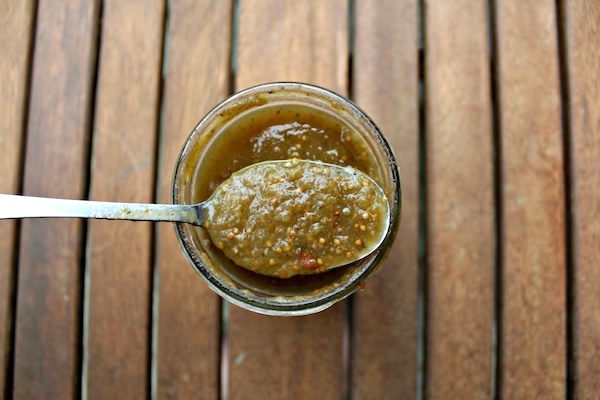
Tomatillos are one of those garden vegetables that even brown thumb gardeners just can’t seem to kill. They’re known to produce 10 lbs or more per plant, meaning you’ll need to preserve most of your yields to keep them from spoiling before you can get to them.
The first year we planted tomatillos, the rest of our garden failed and we let the plot go to the weeds. It was actually a hayfield before we tilled it under, so back to hayfield it went.
Later that year, we were out walking in the high grass and we felt a crunch under our feet. Low and behold, a hearty crop of tomatillos waiting for us under chest-high grass.
We harvested 40 lbs of tomatillos from 8 plants completely untended and buried in the grass!
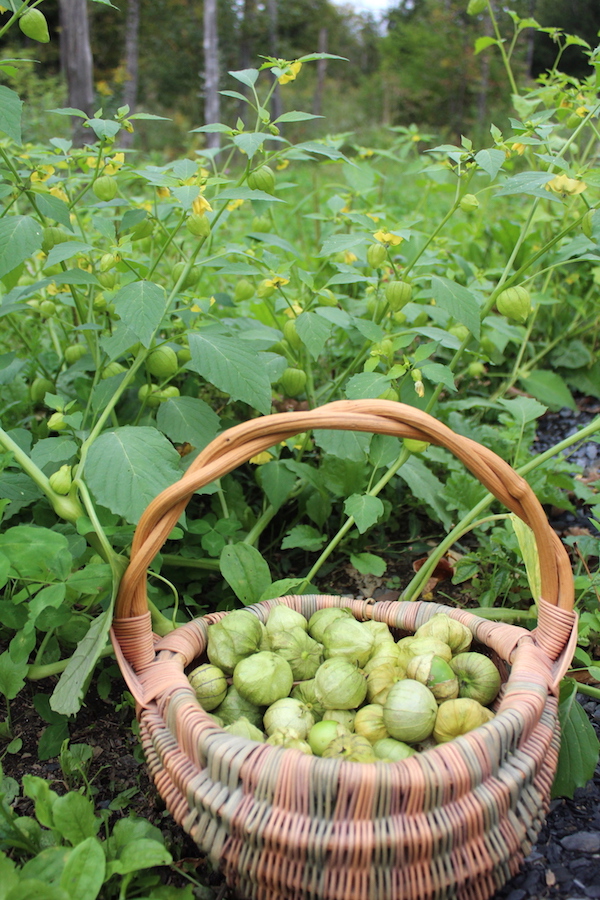
Since that first year, we’ve had volunteer tomatillo plants pop up in the garden, on the lawn, and around the edge of the driveway every single year.
Those volunteer plants produce many pounds of fruit, even growing unwatered and unfertilized from gravel soil. If there was ever a plant for post-apocalyptic gardening, this is it!
More than once I’ve been given a trash bag full from neighbors or friends that wanted to try growing them but didn’t know what they were getting themselves into.
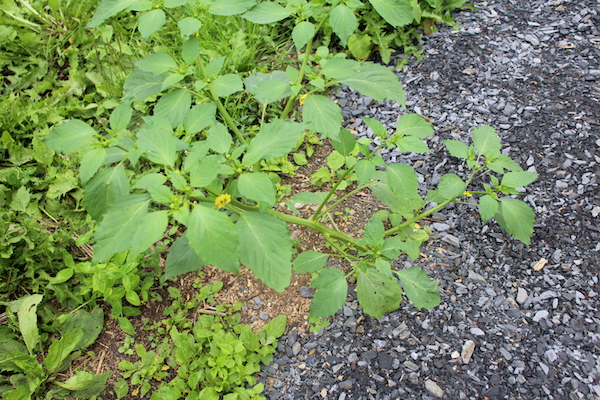
What is Salsa Verde?
Green sauce (Salsa Verde) is a spicy sauce traditionally made with tomatillos, onions, and lime juice.
The lime juice is added both for flavor, and to increase the acidity so that this recipe can be water bath canned.
Chili peppers, cilantro, and cumin provide the dominant flavors.
Try slow cooking a pork shoulder in the crockpot covered in salsa verde, or make a quick weeknight batch of green sauce enchiladas.
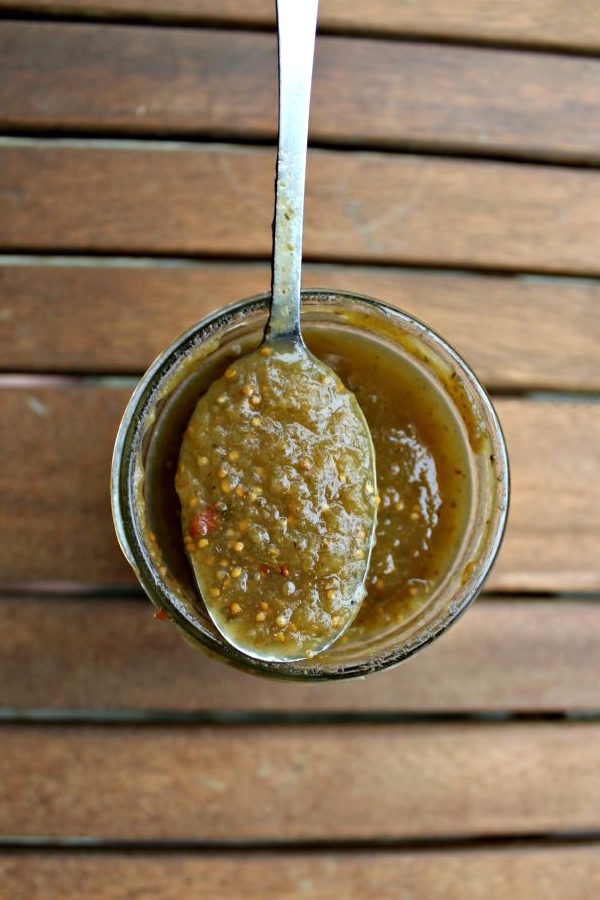
Tomatillo Sauce Recipe Variations
This recipe for canning tomatillo salsa is a safe tested recipe that comes from So Easy to Preserve, which is put out by the University of Georgia. There’s a very similar small batch recipe published in the book Preserving By the Pint which focuses on recipes using just small, farmer’s market quantities of fruits and vegetables.
Most tested tomatillo salsa recipes use white vinegar instead of lime juice, which results in a harsh flavor (in my opinion).
I was really happy when I found a tested recipe for canning tomatillo salsa without vinegar, and I think the lime works wonderfully in the finished green sauce.
I’ve had a number of people send me notes with questions about changing this recipe, and how it would affect canning safety. While it’s possible to change any canning recipe if you know the principles of safe canning, I wouldn’t recommend it unless you really understand what’s going on with the food chemistry.
It’s important to note that while some studies suggest that tomatillos are acidic enough for water bath canning, the other ingredients in this recipe are not. Both onions and peppers are low acid foods, and they require the lime juice in this recipe for safe water bath canning.
The ratios in this recipe are very specific, and you cannot skip the peppers and add more onions (or vice versa). You can, however, omit the peppers, onions, or spices.
You can also substitute one type of pepper for another, using all sweet peppers or hot peppers interchangeably.
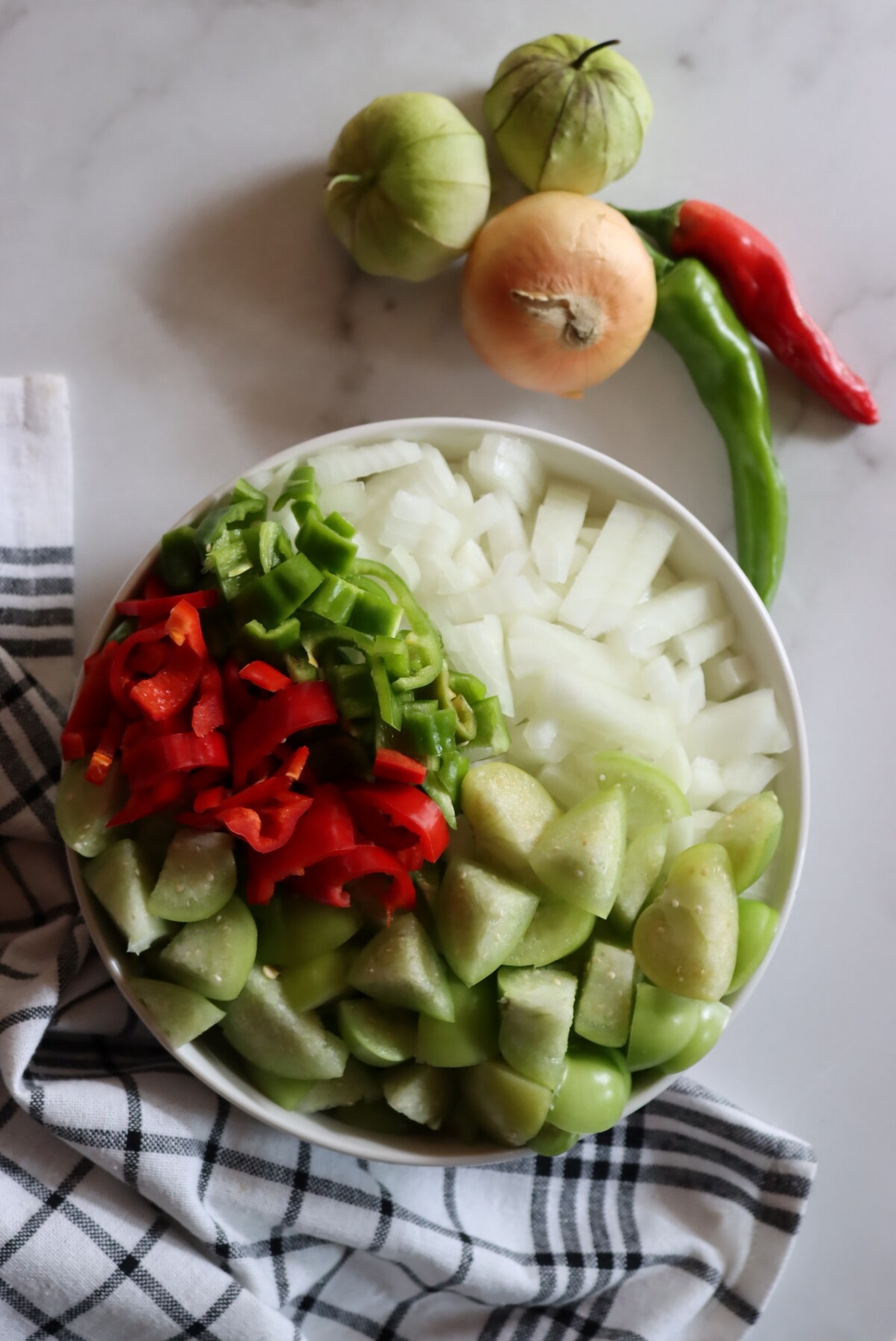
You can substitute citric acid dissolved in water for the lime juice, but you’d have to use quite a bit. One teaspoon of citric acid is equal to 1/4 cup citrus juice, so you’d need to add at least 4 teaspoons to this recipe.
If you’re really set on making this sauce without lime juice or another acid, for whatever reason, the salsa verde must be pressure canned. I couldn’t say how long, since there’s no tested recipe for pressure canning tomatillo sauce, but my best guess would be to follow instructions for pressure canning onions which require 40 minutes at 10 pounds pressure (under 1000 feet in elevation).
Again, there’s no tested recipe so use your best judgment and know it’s at your own risk.
We can plain whole tomatillos for pork stew in the wintertime.
In theory, if you omit the low acid ingredients (onions, garlic, chili, and spices) it’s possible to just can tomatillo puree with a water bath canner with no other ingredients. There are studies that show that tomatillos are acidic enough for canning on their own without added acidity.
The national center for food preservation still suggests adding citrus juice to pints of whole canned tomatillos at a rate of 1 tablespoon per pint or 2 tablespoons per quart. Growing conditions can impact the acidity of fruits, and they provide similar recommendations in tomato canning recipes.
I’d still suggest that you still add the acidity if you choose to can tomatillo puree.
Know that there’s no specific tested recipe for canning tomatillo puree, the only tested recipe is for canning whole tomatillos in water. If you do choose to try canning tomatillo puree, obviously it’s at your own risk, use your best judgment.
That said, tomatillo and lime go really well together and the spices/onion/salt are all really wonderful in this recipe.
The lime juice really does add wonderful flavor, in my opinion, it just wouldn’t be as good without it!
I’ve been using this recipe for years and it’s really good as it is. The lime juice adds wonderful flavor to the finished salsa verde, and the onions and peppers are essential as well, in my opinion.
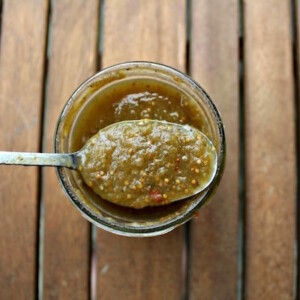
Salsa Verde Recipe for Canning
Ingredients
- 5 cups tomatillos, husked & chopped
- 1 1/2 cups bell pepper, or other sweet pepper, chopped
- 1/2 cup hot peppers, chopped, or more sweet peppers for a milder sauce
- 4 cups onion, diced
- 1 cup Bottled Lime Juice, or lemon juice
- 1 bulb garlic, whole bulb, peeled and minced
- 1 Tbsp. ground cumin
- 3 Tbsp. dried oregano leaves
- 1 Tbsp. salt
- 1 tsp. black pepper
Instructions
- Combine all ingredients in a large stockpot and bring to a simmer on the stove. Simmer for 20 minutes to an hour to allow the tomatillos to break down and flavors to meld. Taste and adjust salt accordingly.
- Ladle sauce into prepared pint mason jars leaving 1/2 inch headspace, and process in a water bath canner for 15 minutes for pints. (Adjust for altitude)
- Remove from the canner and allow to cool at room temperature before checking seals to make sure all jars have properly sealed. Place any unsealed jars in the refrigerator for immediate use.
Notes
Nutrition
Nutrition information is automatically calculated, so should only be used as an approximation.
Water Bath Canning Recipes
Looking for more easy canning recipes? Look no further…
- Canning Oranges
- Canning Peaches
- Classic Dill Pickles Canning Recipe
- Old Fashioned Grape Jam
- Canning Lemon Curd
- Canning Apple Pie Filling
- Pickled Peppers
And if you want to keep all the heat and steam out of your house, consider setting up an outdoor canning kitchen!
Food Preservation Tutorials
Canning food at home is just the beginning…
- How to Make Apple Cider Vinegar
- Beginners Guide to Cheesemaking
- Beginners Guide to Lacto-Fermentation
- How to Make Mead (Honey Wine)
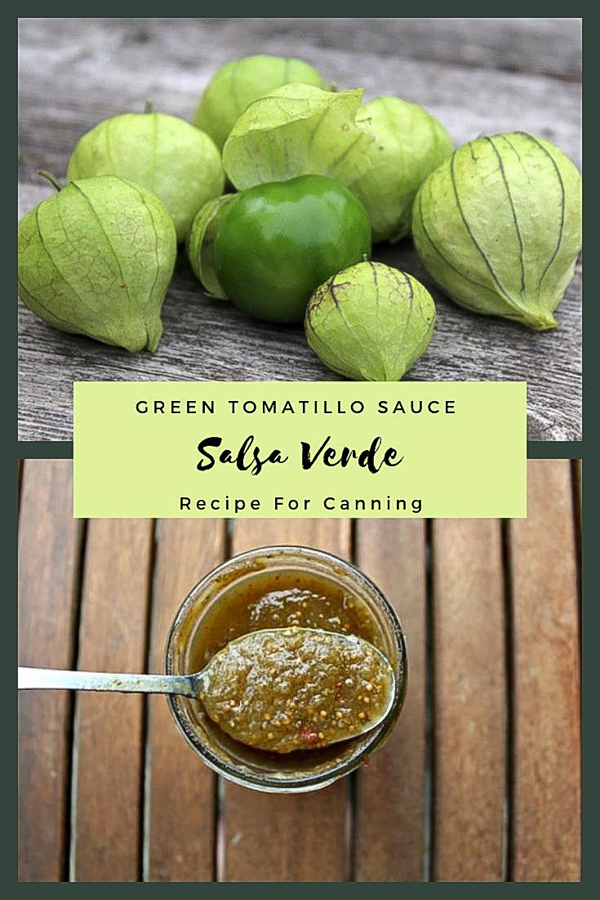
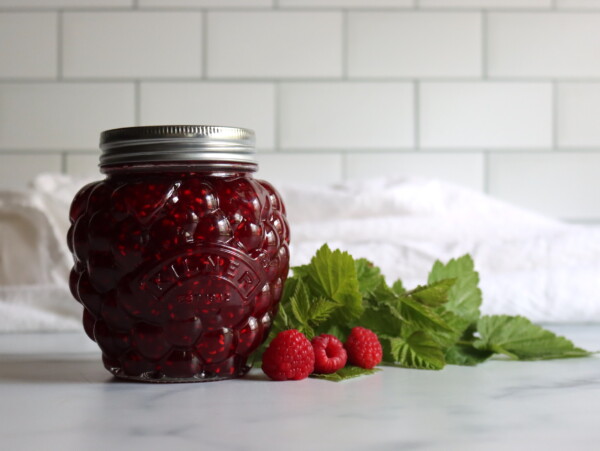
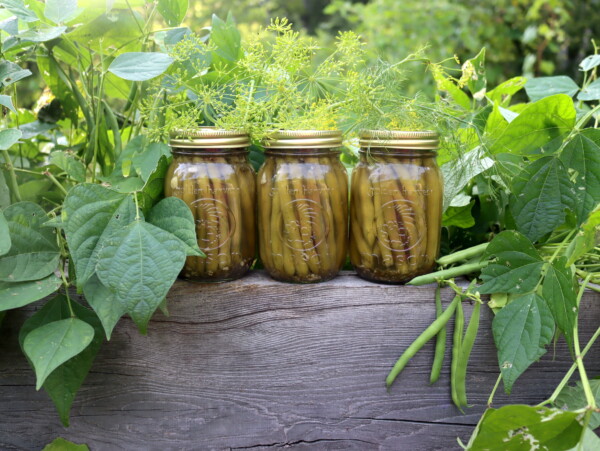
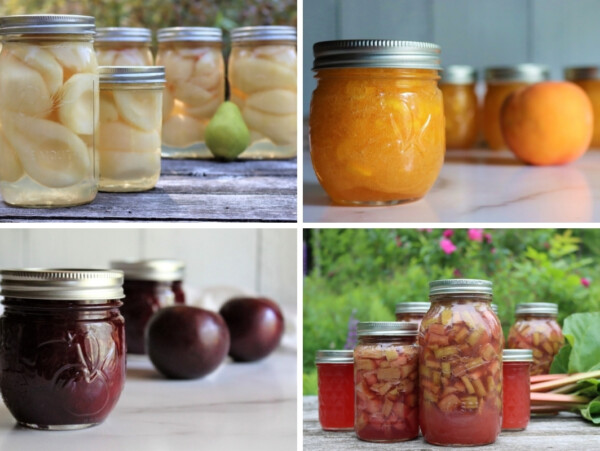
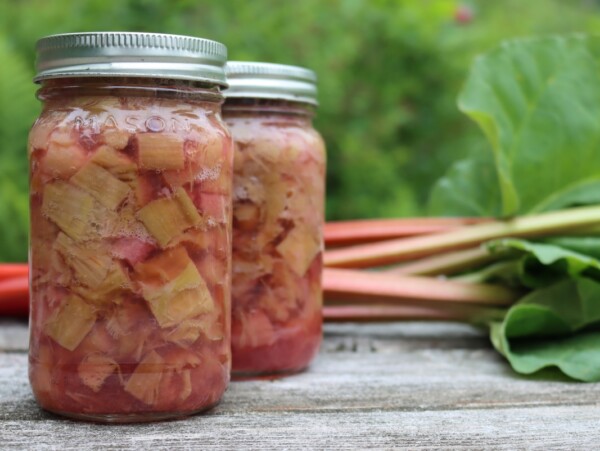
Absolutely delicious! Made a triple batch. Only changes I made was less cumin since I’m not a big fan and ⅓ lime juice and the rest lemon since that was all I had on hand. Before it was canned, I used some of it on a pork shoulder roast. So, so yummy!
Wonderful, so glad you enjoyed it!
I used this recipe to make salsa verde for the first time, this has a wonderful flavor! I’m not a lime juice fan so I used lemon juice and love it that way. I used sweet banana peppers instead of bell peppers and hot peppers, both that I’m growing this year. This recipe is a winner. FYI, you may not need a 1/2 cup of hot peppers if really spicy isn’t your thing.
Those sound like great substitutions!
Can I safely add chicken flavor “better than bullion” to this. If I added 1 Tbsp would I need to pressure can it?
It’s really hard to say if it would affect the acidity enough to require pressure canning without actually testing it.
I noticed another commenter mentioned a recipe by weight VS cups, but I didn’t see it anywhere in the text. I would find this highly helpful if it’s available!
I’m sorry but it’s not available at this time. You can always use the cup measurements as listed and weight it out as you make it for future reference.
?Hi! I am presently working on this recipe. Before I add 24 garlic cloves ( roughly 3 bulbs – Im tripling the recipe) Am I supposed to use that much?
If you’re tripling the recipe then yes, 3 bulbs would be correct.
Cilantro is not included in the recipe. How much for the 5 pints?
You can add in as much cilantro as you like, just be sure to account for that addition with your other low acidic foods. You just want to keep the proportions of your acidic foods and low acidic foods the same.
Hi Ashley. I just wanted you to know that your website is the one I look for when starting any canning project, which, this time of year is quite frequently. Your tomatillo chili verde recipe is so good that I have used it all summer. The only difference i have made is to cut back on the chilies because I like the taste of the tomatillos and without so much heat. i have also made your homemade canned tomato paste. it is very time consuming but so worth it. I will be using your site for many years to come.
Thanks Catherine. We’re so glad to hear that.
Hi! Do you think I could use bottled lime juice instead of fresh?
Yes, that should be fine.
Hi! May I use bottled lime juice instead of fresh? Thank you for sharing your recipe! I am really looking forward to trying this 🙂
Yes, bottled lime juice is fine.
Hello!
Could I possibly roast all the vegetables in the oven before canning? Thanks so much!
Yes, it’s totally fine to roast the veggies.
Can you advise how much cilantro to add to keep it a safe recipe? Thank you.
You can add in as much cilantro as you like, just be sure to account for that addition with your other low acidic foods. You just want to keep the proportions of your acidic foods and low acidic foods the same.
Absolutely wonderful !!! I made a quadrupal batch. Roasted all of the veggies on my smoker using pecan wood. Really enhanced the flavor. Simply wonderful. Even Mexican restaurants would be jealous !!! Couldn’t be happier. Thank You so much for the recipe!
You’re welcome. That sounds very tasty.
Hi KC, I’m thinking about roasting my tomatillos in the smoker as well. Did you find any weird taste after the canning process from the smoke?